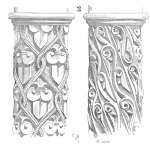
A brief introduction to the statistical hypothesis test called the t-test. Useful when examining if there is a difference between the means of two groups.
[Read more…]Your Reliability Engineering Professional Development Site
Welcome to "Reliability Knowledge," a series dedicated to sharing insights and expertise on the critical role of reliability in product development, useful life, and wear-out life. The articles and videos are designed for engineers, product developers, and anyone interested in understanding how to create products that not only meet but exceed reliability expectations throughout their entire lifecycle.
Reliability in Product Development. Useful Life Reliability. Wear Out Life Reliability. Here you'll gain access to a wealth of knowledge that bridges the gap between theory and practice in reliability engineering.
by Semion Gengrinovich Leave a Comment

A brief introduction to the statistical hypothesis test called the t-test. Useful when examining if there is a difference between the means of two groups.
[Read more…]by Semion Gengrinovich Leave a Comment

Why is confidence level so important in engineering test data analysis?
From the name itself it gives us a very good hint; Confidence level is giving the confidence in data analysis. In the next graph, you can find 10 samples and fitted Weibull 2p distribution with 95% of Confidence level:
[Read more…]by Semion Gengrinovich Leave a Comment

Exploring the differences between HALT and ALT, or Highly Accelerated Life Test and Accelerated Life Test. Plus when to use which when.
[Read more…]by Semion Gengrinovich Leave a Comment

It seems a big misconception in different industries between those two terms “Reliability” and “Durability”. So, first thing first, I apply google research to find out what is definitions:
Reliability is defined as the probability that a product, system, or service will perform its intended function adequately for a specified period of time or will operate in a defined environment without failure. (Source American Society for Quality (ASQ))
Durability is the ability of a physical product to remain functional, without requiring excessive maintenance or repair, when faced with the challenges of normal operation over its design lifetime. (Source Wikipedia)
[Read more…]by Semion Gengrinovich Leave a Comment

A brief discussion on the difference and similarities of accelerated life testing (ALT) and durability testing. For one difference, ALT used high stress conditions to shorten the time to failure. Whereas, durability testing typically uses whole products and normal use condition.
[Read more…]by Semion Gengrinovich Leave a Comment

Ernst Hjalmar Waloddi Weibull (18 June 1887 – 12 October 1979) was a Swedish engineer, scientist, and mathematician. (source Wikipedia)
[Read more…]by Semion Gengrinovich Leave a Comment

The history of Design of Experiments (D.O.E) can be traced back to the work of various individuals, including Genichi Taguchi, a Japanese engineer and statistician. Taguchi made significant contributions to the field, particularly in the area of robust design, which aimed to improve the quality of products and processes. His work was influenced by the need for quality improvement in post-World War II Japan. Taguchi’s methodology, known as the Taguchi methods, was based on the concept of “robust parameter design,” which aimed to make processes and products insensitive to environmental factors or other variables that were difficult to control.
[Read more…]by Semion Gengrinovich Leave a Comment

And again there is no one answer for such simple question. Strongly depends on what type of test you need to conduct.
It is also very important to understand at which stage, design of the product. Usually at very early stages of the design there is many unexpected failures, when design is mature enough – failures become predictable, and there is one last period, called – wear out/aging stage.
[Read more…]by Semion Gengrinovich Leave a Comment

The 8D (Eight Disciplines) method is a problem-solving methodology designed to find the root cause of a problem, devise a short-term fix, and implement a long-term solution to prevent recurring problems. It was first introduced in Ford’s 1987 Team-Oriented Problem Solving manual and has since become a widely used problem-solving method, also known as Global 8D. The 8D process consists of eight disciplines, each focusing on specific aspects of problem-solving
[Read more…]by Semion Gengrinovich Leave a Comment

Statistical distribution – it has important role in general life and of course in engineering specifically. So, what is all about?
During morning commute either by bus or vehicle, you take some budget of time. From your daily routine experience, you with very high probability, can predict arrival time. You also know how much time it will take, in less ordinary cases, like slippery roads, or cars accident along you route.
[Read more…]by Semion Gengrinovich Leave a Comment

A short introduction to accelerated life testing or ALT. It is a method used to enhance product reliability by subjecting prototypes to stress levels significantly higher than those encountered in actual use. The idea is to rapidly induce failures which is equivalent to speeding up time.
[Read more…]by Semion Gengrinovich 2 Comments

Anybody who did some hardware test in they life, eventually will face the question of sample size.
Probably it will be a tradeoff between the test duration and amount of samples to test.
So how much is enough? One, three, ten?
[Read more…] Ask a question or send along a comment.
Please login to view and use the contact form.
Ask a question or send along a comment.
Please login to view and use the contact form.